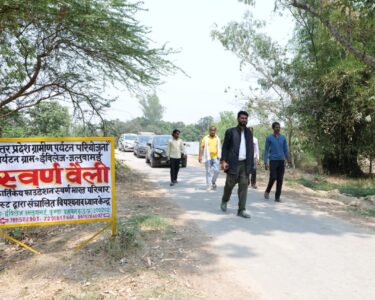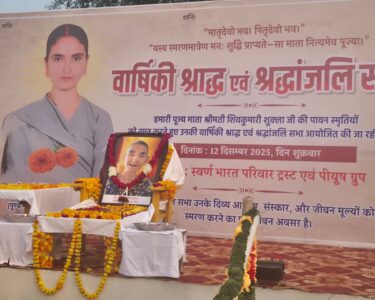Assembly elections will be held in Maharashtra in a single phase on November 20 while Jharkhand will vote in two phases on November 13 and November 20. The results for both the states will be declared on November 23, the Election Commission announced on Tuesday.
The poll panel also announced the dates for the by polls to 48 assembly constituencies and two Lok Sabha constituencies.
The Lok Sabha bypoll in Kerala’s Wayanad and assembly bypolls in 47 constituencies across various states will be held on November 13. The assembly bypoll in Uttarakhand and Lok Sabha bypoll in Maharashtra’s Nanded will take place on November 20, the EC said.
The term of the Maharashtra assembly ends on November 26, while the Jharkhand assembly tenure ends on January 5 next year.
During briefing, chief election commissioner (CEC) Rajiv Kumar said that there will be a total 9.63 crore eligible voters in Maharashtra. Out of these, there will be nearly 21 lakh first-time voters.
He said that Jharkhand will have 2.6 crore eligible voters, of which nearly 1.14 lakh will be over the age of 85.
The assembly elections in Maharashtra and Jharkhand will be keenly watched, especially after the recent results of Haryana and Jharkhand polls indicated a shift in political momentum.
The BJP won Haryana for a record third consecutive time and dealt a big blow to the ambitions of Congress, which was hoping to wrest power in the state after a solid show in the Lok Sabha polls. In J&K, the alliance of National Conference and Congress is making a comeback in a closely contested election, which saw BJP also posting its best-ever performance.
Since Maharashtra is a major battleground state and the financial hub of India, the outcome of the assembly polls here will have a significant bearing on the national political landscape.
The state has witnessed a major political shake-up since 2019 with NCP and Shiv Sena – the two regional satraps – undergoing a vertical split.
In 2019, the Uddhav Thackeray-led Shiv Sena broke ranks with BJP amid disagreement over power-sharing. He formed an alliance government with NCP and Congress under the banner of Maha Vikas Aghadi (MVA).
The alliance collapsed in June 2022 when Eknath Shinde and several MLAs rebelled against Thackeray and joined forces with BJP, causing a vertical split in Shiv Sena. In July 2023, Ajit Pawar caused a similar split in NCP after he rebelled against his uncle Sharad Pawar and pledged support to the BJP-Sena government.
The contest is now primarily between the two major alliances in the state: the ruling Mahayuti which comprises BJP, Eknath Shinde-led Shiv Sena and Ajit Pawar-led NCP; and the opposition Maha Vikas Aghadi of Shiv Sena (UBT), NCP (SP) and Congress. Several other non-aligned parties, like VBA, AIMIM and MNS, will also join the fray.
The recent Lok Sabha elections gave a big jolt to the ruling Mahayuti faction, which won just 17 out of the 48 seats in Maharashtra. The MVA made handsome gains and won 30 seats, setting the ball rolling for a keen clash in the state elections.
The assembly elections in Maharashtra have different stakes for each player. For BJP and Congress, it is about winning power in a prized state and clinching the political momentum in the aftermath of Lok Sabha polls. For the factions of NCP and Shiv Sena, it is about staking claim for the true legacy of their respective parties and a test of voter loyalties.
Like Maharashtra, Jharkhand also witnessed political uncertainty earlier this year after the arrest of chief minister Hemant Soren in a money laundering case. In his absence, the ruling JMM-Congress coalition briefly appointed Champai Soren to lead the government. However, after Hemant Soren secured bail and returned to office, Champai felt marginalized and subsequently joined BJP.
In the recent Lok Sabha polls, the BJP-led alliance won 9 out of the 14 seats in Jharkhand, suffering a loss of 3 seats compared to 2019. The INDIA bloc gained as many seats, improving its tally to 5 in 2024 from 2 in 2019.
In the 2019 assembly polls, the alliance of JMM and Congress won 47 out of 81 seats in the state and wrested power from the BJP government.
Bypoll battle
Besides the state elections, the spotlight will also be on the crucial bypolls to two Lok Sabha and 48 assembly seats which are lying vacant due to various reasons.
The Wayanad seat fell vacant after Rahul Gandhi decided to enter the Lok Sabha as a Rae Bareli member. His sister Priyanka Gandhi is expected to make her electoral debut from the state. If she wins, all three Gandhis – Sonia, Rahul and Priyanka – will be in Parliament at the same time.
By-elections are also scheduled for 10 assembly seats in Uttar Pradesh, including Katehari (Ambedkar Nagar), Karhal (Mainpuri), Milkipur (Ayodhya), Meerapur (Muzaffarnagar), Ghaziabad, Majhawan (Mirzapur), Sisamau (Kanpur city), Khair (Aligarh), Phulpur (Prayagraj), and Kundarki (Moradabad).
Nine of these seats, excluding Sisamau, became vacant after their MLAs were elected to the Lok Sabha.
The by-election in UP will be important for both BJP and Samajwadi Party, which are vying for superiority in the most crucial political state.
In the recent Lok Sabha polls, the SP-Congress alliance dealt a big blow to BJP after winning 43 out of the 80 seats in the state. SP won 37 seats while Congress bagged 6. The BJP was reduced to 33 seats this year, compared to 62 in 2019.
The bypolls in Milkipur will be closely watched since it falls under Ayodhya, which is home to the grand Ram Temple inaugurated by PM Modi in January this year. However, the Mandir effect did not translate into votes in the subsequent Lok Sabha polls since SP won the Faizabad seat, dealing a blow to BJP. Faizabad is located in Ayodhya.
Securing a win in Milkipur is now a matter of prestige for both BJP and SP.






